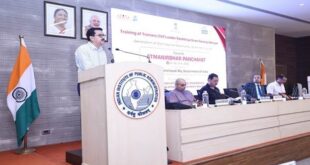- Most countries in Asia and the Pacific are inadequately prepared to manage the rising challenges of extreme weather events and natural disasters, according to a new study by the United Nations Economic and Social Commission for Asia and the Pacific (ESCAP).
- Countries in the region lack the necessary data as well as means to support adaptation and mitigation efforts.
- In the absence of decisive action, climate change will remain a leading cause of poverty and inequality across the region.
- Over the past 60 years, temperatures in the region have increased faster than the global mean.
- Extreme, unpredictable weather events and natural hazards have become more frequent and intense.
- Tropical cyclones, heatwaves, floods and droughts have brought immense loss of life and displacement, damaging people’s health and pushing millions into poverty.
- Of the 10 countries most affected by these disasters, six are in the region.
Impact on development:
- Climate change and climate-induced disasters are increasingly threatening development in Asia and the Pacific.
- They have been exacerbating the underlying drivers of poverty and societal inequalities by disproportionately burdening poor and marginalised groups.
- The Asia-Pacific region accounts for more than half of the world’s greenhouse gas emissions.
- It is one of the most rapidly developing regions of the world, with a significant proportion of the global population.
- The region is also home to most of the world’s low-lying cities and vulnerable small island states.
High costs of losses:
- The costs of climate change are already too high.
- The annual average losses from natural and biological hazards in Asia and the Pacific are approximately $780 billion.
- Under a moderate climate change scenario, these losses are expected to increase to $1.1 trillion and, under the worst-case scenario, to $1.4 trillion.
- The current financing on this front is insufficient to meet the region’s requirements for investment in climate action or to contain global warming at 1.5°C.
- With only seven years left to 2030, the target year for SDG, scaling up the available finance and increasing climate action ambition is important.
Way forward:
- Hydropower, which holds the largest share of the region’s installed renewable energy capacity, has become increasingly unreliable.
- The transport sector, primarily powered by oil, should be shifted to a low-carbon pathway.
- This can be achieved by reducing transport distance through integrated land use, planning, shifting to sustainable transport modes with low-carbon or net-zero-carbon emissions, as well as improving vehicle and fuel efficiency.
SOURCE: THE HINDU, THE ECONOMIC TIMES, PIB
 Chinmaya IAS Academy – Current Affairs Chinmaya IAS Academy – Current Affairs
Chinmaya IAS Academy – Current Affairs Chinmaya IAS Academy – Current Affairs



